


EC-121 Warning Star
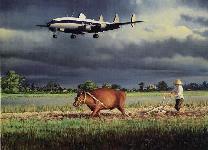 The Lockheed Warning Star began development as the US Navy PO-1W, an early model Constellation Airliner modified to carry experimental electronic surveillance equipment. After the PO-1W proved the concept of airborne early warning in large NATO exercises, the US Navy and Air Force ordered large numbers of a developed variant based on the Lockheed Model 1049 Super Constellation. These aircraft entered service as the Navy WV-2, with 244 ordered, and the Air Force EC-121, 82 ordered of which 72 were from US Navy orders.
The Lockheed Warning Star began development as the US Navy PO-1W, an early model Constellation Airliner modified to carry experimental electronic surveillance equipment. After the PO-1W proved the concept of airborne early warning in large NATO exercises, the US Navy and Air Force ordered large numbers of a developed variant based on the Lockheed Model 1049 Super Constellation. These aircraft entered service as the Navy WV-2, with 244 ordered, and the Air Force EC-121, 82 ordered of which 72 were from US Navy orders.
The Warning Star entered service in 1955, with the final variants being retired from the US Air Force Reserve in 1978. The Warning Star pioneered the concept of Airborne Early Warning and Control, with units being used for fleet coverage, airborne extension of the Distant Early Warning (DEW) Line, support of the Apollo Space Program and other force coordination tasks. Throughout its life the Lockheed Warning Star was used to test experimental radar and electronic equipment installations, including a rotodome installation on the WX-2E (above), later redesignated the EC-121L. After evaluation by the US Navy the EC-121L was used as a prototype for evaluation of systems later installed on the E-3 Sentry.
USAF EC-121s were deployed to Vietnam in 1965 to provide coordination, early warning and communications relay. A USAF EC-121 made history in October 1967, when, while operating over the Tonkin Gulf off North Vietnam, it guided a US Fighter to the successful interception
of a VNAF Mig 21, the first time an airborne controller had directed a successful attack, setting the stage for many future developments in the arena of AEW&C.
On July 28, 1970, two EC-121 Lockheed "Super Constellations" from the 193d Tactical Electronic Warfare Squadron took off from Olmsted State Airport, Harrisburg, Pennsylvania. United States forces were fighting in Vietnam, and the EC-121s were headed for Korat in the neighboring country of Thailand, 12,000 miles away, where the United States Air Force was operating from a Royal Thai Air Force base. Korat Air Base would be home for 252 Air Guardsmen for the next six months. The men were rotated as part of Operation Commando Buzz, with approximately 60 officers and airmen at a time serving tours of duty of from 30 to 90 days. In addition to the aircrews and technicians, an additional 75 officers and airmen supported Commando Buzz by flying materiel and personnel from Olmsted to Southeast Asia and back. The Pennsylvania Air Guard's EC-121s were laden with electronic equipment, and their mission was to act as flying radar stations and air borne control platforms. They possessed search and identification radar, interception equipment, and a battery of communications gear. The range of the EC-121s extended over all of North Vietnam and the Gulf of Tonkin, and they were a key element in Seventh Air Force control of tactical air operations. The final group of Air Guardsmen rotated during the Thanksgiving and Christmas holidays of 1970, and early in January 1971, the mission was completed. Within three days after the return of the 193d to Pennsylvania the Commander-in-Chief, Pacific Air Forces sent a message to the Chairman of the Joint Chiefs of Staff, commending the dedication and professionalism demonstrated by the exceptional mission performance of the 193d, which won the USAF outstanding unit award that year.
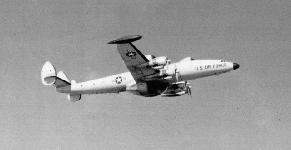
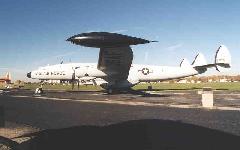
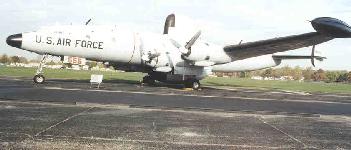
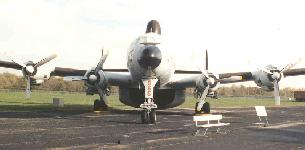
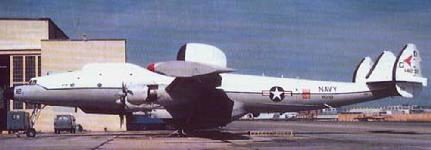
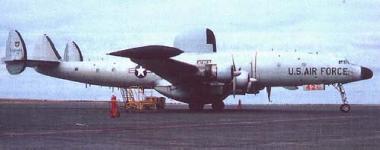
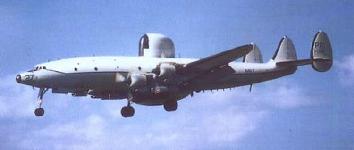

Sources and Resources
- New early warning mission has familiar past Air Force Reserve Command Historical Services 6 Jul 1999 -- In 1976, the Reserve early warning program underwent significant changes. At the time, the Air Force wished to terminate for economy purposes its EC-121 Iceland mission.
http://www.fas.org/man/dod-101/sys/ac/fighter.htm
Maintained by Robert Sherman
Originally created by John Pike
Updated Thursday, July 08, 1999 10:22:43 AM
 The Lockheed Warning Star began development as the US Navy PO-1W, an early model Constellation Airliner modified to carry experimental electronic surveillance equipment. After the PO-1W proved the concept of airborne early warning in large NATO exercises, the US Navy and Air Force ordered large numbers of a developed variant based on the Lockheed Model 1049 Super Constellation. These aircraft entered service as the Navy WV-2, with 244 ordered, and the Air Force EC-121, 82 ordered of which 72 were from US Navy orders.
The Lockheed Warning Star began development as the US Navy PO-1W, an early model Constellation Airliner modified to carry experimental electronic surveillance equipment. After the PO-1W proved the concept of airborne early warning in large NATO exercises, the US Navy and Air Force ordered large numbers of a developed variant based on the Lockheed Model 1049 Super Constellation. These aircraft entered service as the Navy WV-2, with 244 ordered, and the Air Force EC-121, 82 ordered of which 72 were from US Navy orders.










